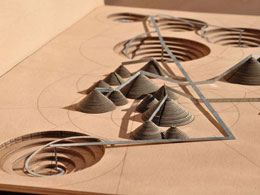STUDENTS PROJECTS
PROJECTS2013
Students : Ioanna Georgitsopoulou, Chasioti Maria
Associate Professor_Dragonas Panos
Department of Architecture of University of Patras
Design Thesis, June 2013
We wandered around the landscape of Euboea and particularly through the destroyed region of the recently abandoned Skalistiri's mines. Due to the mining activity, the landscape has turned into a heterogeneous mixture of elements. Destroyed parts are adjacent to parts that have been gradually healed but even to purely natural ones.
After extensive mapping of the aforementioned landscape, instead of proposing a design strategy for its future, we turned to its past. We tried to study the human forces that acted on it and contributed to the formation of its current image. Our research result is a tripartite narrative that evolves linearly through time and refers to a complete circle of actions on the landscape caused by the mining activity. The same landscape is approached through its three different reflections on time, that are respectively described in each of the three parts of the narrative.
- the landscape as a field of (strategic) mapping
- the landscape as a transformative mechanism
- the landscape as a cognitive experience
The narrative describes every possible degree of human participation and complicity in any event that may happen in the landscape.
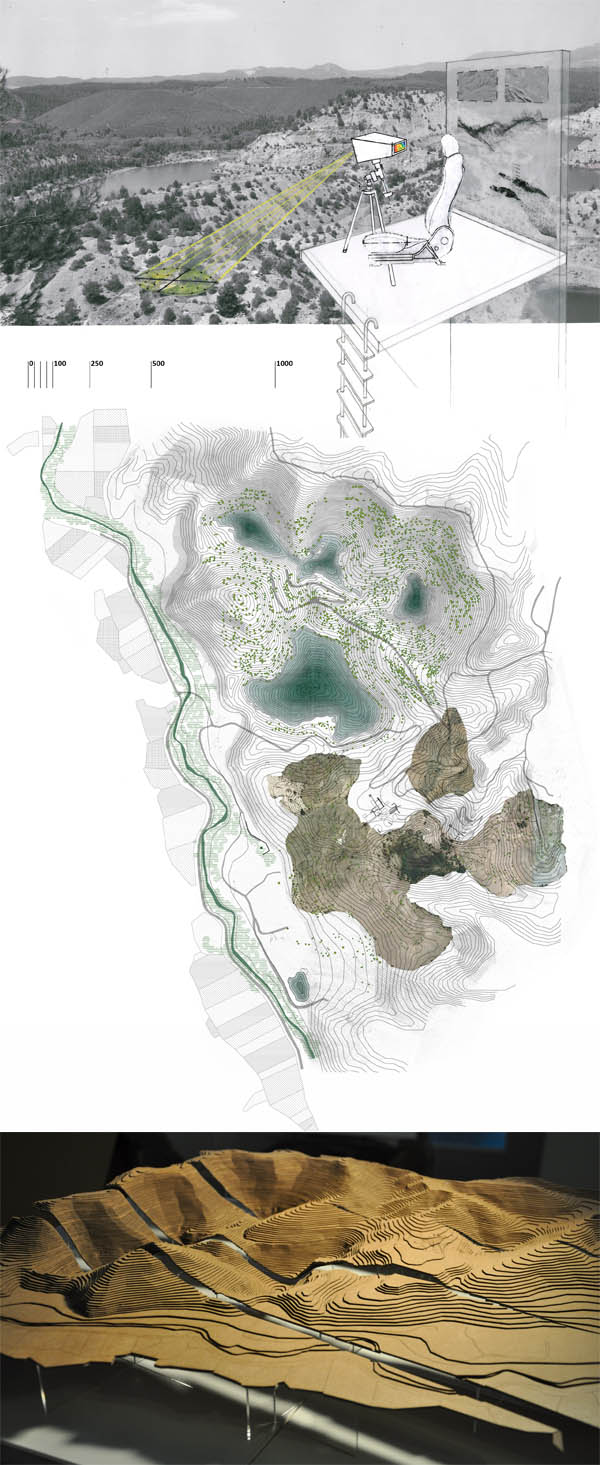
In one of the highest points of the landscape a "chimney" stands alone. Its emblematic form is imposed on the landscape as if it has always been there. A single hole in its front view indicates the human presence. However, the chimney doesn't emit smoke anymore, it is inhabited. Its inhabitant lives there for a reason. He perceives the landscape as a group of parts where each part has a specific value, it is unique.
Every day, after having selected the most suitable tool from his toolbox, he begins to wander around the landscape in order to collect useful information. He studies both its quantitative and qualitative characteristics. As a result, the landscape is identified.
From all those landscape parts that differ in value he collects soil samples. He creates a soil archive, a huge mosaic made of landscape pieces. As a result, the landscape is classified.
He spends the rest of the day in his workspace inside the chimney. He works at his wooden table, processing all the collected information. In an effort to organize it he creates different types of maps. A periscope helps his eyesight mechanically by transferring an image of the exterior inside the workspace. The landscape is therefore constantly supervised. After their creation, the maps are stored in chronological order. The archive is buried in the ground. Time passes while more and more maps are added, the landscape changes.

A plan of actions on the landscape, an exploitation strategy is devised. In the strategic maps all the potential targets are marked. The maps function as a sort of a protocol for the landscape, they predetermine what is going to happen, how the landscape image will be transformed.

One of the strategy maps is ready to be put into action. The machines, essential for performing the act, are mobilized. On the whole, they consist a huge mechanism that is imposed on the landscape and gradually transforms it.
a. Removal mechanism
Above the ground landscape parts are removed in formations of rings. A spiral penetrates each ring. The spiral development is equivalent to the depth of the subtraction. Under the ground the landscape is being transformed in a similar way, but the new formations are now closer to the scale of the mechanical means. Pits and cavities, are created.
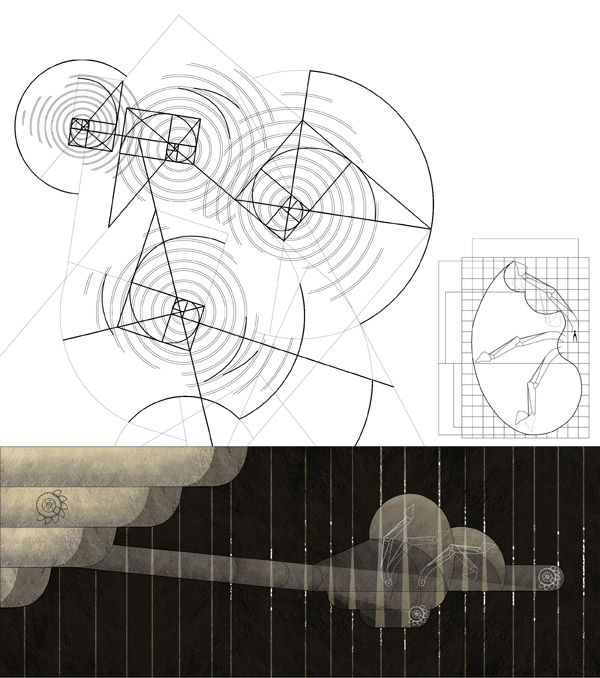
b. Separation mechanism
Machines, adapted to the human scale, separate the parts of the landscape that were removed according to their volume and quality.
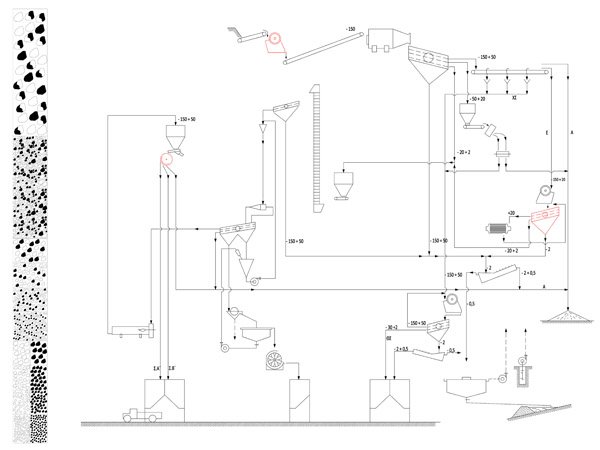
Machine A: Crusher
The landscape is crushed into smaller parts. The crushing occurs manually by rotating a lever. A double rotation corresponds to the crushing of a single piece.

Machine B: "Vibrating" screen
The landscape is separated into individual parts due to volumetric differences. Gratings of different densities begin to move freely and eccentrically with a manual rotation of a lever.

Machine C: Magnetic tank
Considering that the most valuable parts of the landscape are magnetized, the magnetic property is used for the qualitative separation of the landscape. With a manual rotation of a stirrer, a magnetic surface is simultaneously lifted. The landscape is separated into white and black parts.

c. "Addition" mechanism
After their separation, the landscape parts are deposited on predetermined locations in order to be stored. A mechanical system spreads gradually on the landscape, actually being hooked by it, transferring the parts to their specific location. As a result, "addition areas" are created, storage hills that have different colors depending on their quality.
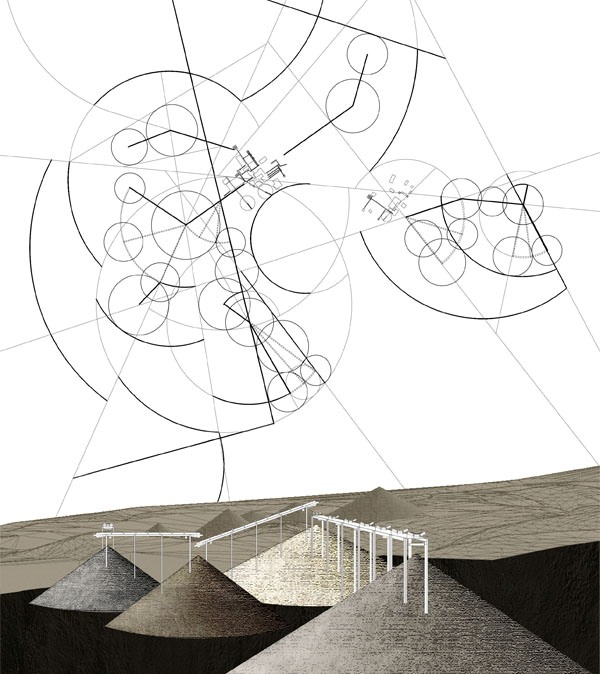
The "transformative mechanism" in action. Islands of "desertification" emerge.
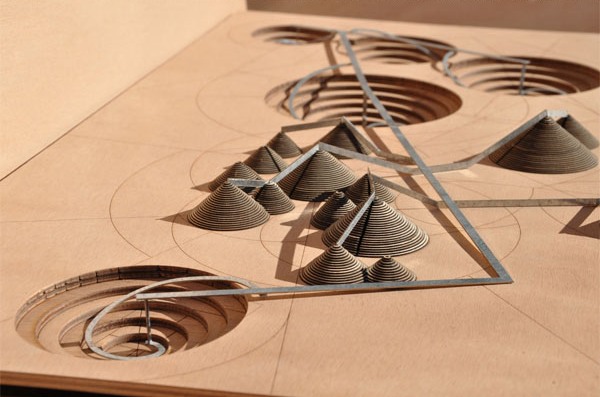
The machines stop functioning. The act is completed. The time goes by and from now on nature undertakes any further transformation or healing of the landscape.
A traveler makes his appearance. He is wandering around without a motive, seeking adventures and thrills. He conceives the different parts of the landscape by using his senses. He keeps a diary full of thoughts and images.

Cognitive Map
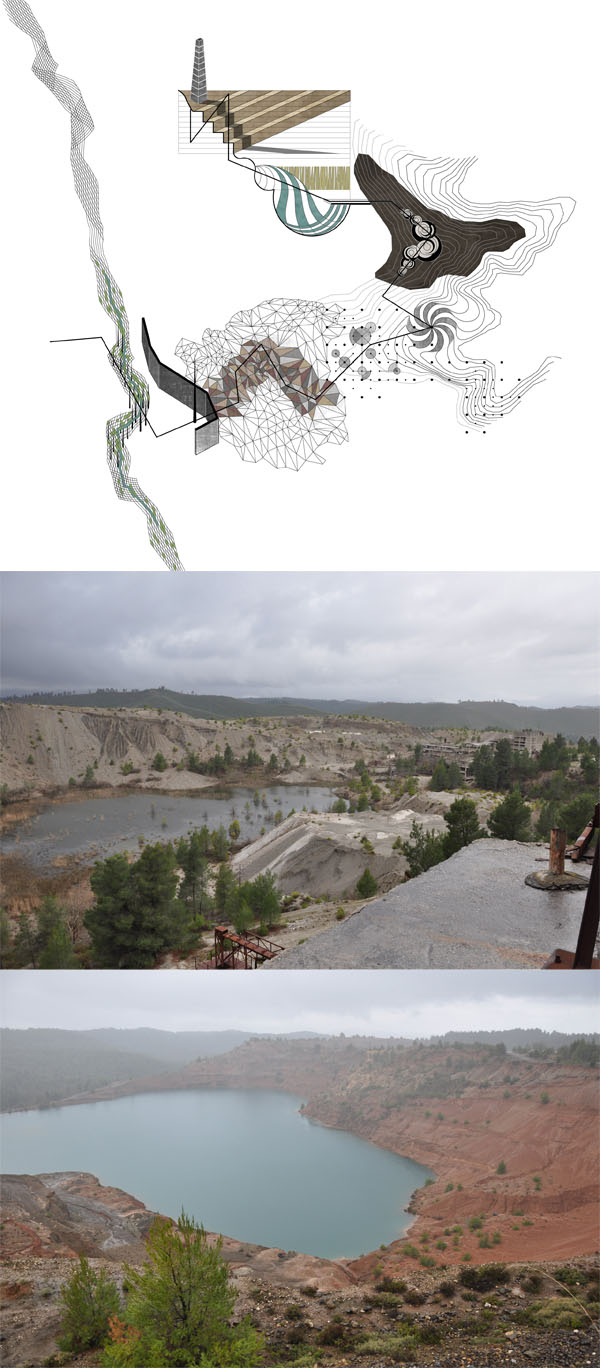
A circle of actions is now complete. Starting point again, a landscape.
Related articles:
- The Greek poetess Maria Mistrioti in international meeting of poetry in Poland ( 30 December, 2011 )
- Art School” of Chalkida ( 15 December, 2012 )
- Edipsos ( 22 March, 2014 )
- The Euripus Strait ( 11 March, 2015 )
